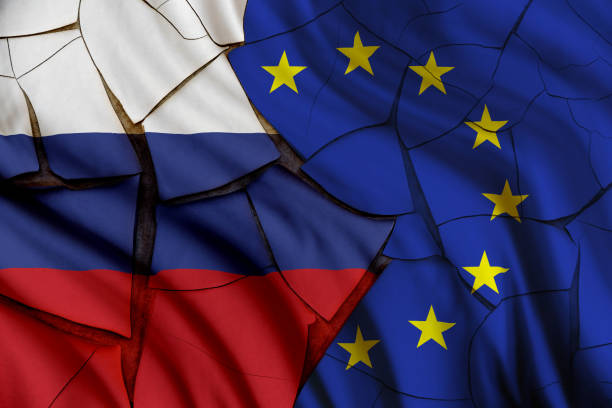Through the enactment of Regulation 269/2014 (the “Regulation”), the European Union imposed restrictive measures in response to Russia’s actions which undermine Ukraine’s sovereignty. Unlike the sectorial sanctions applied under Regulation 833/2014, this Regulation specifically targets individuals and entities who participate in destabilizing activities, primarily through asset freezes. By implementing these measures, the EU reaffirms its commitment to supporting Ukraine’s territorial integrity and promoting international peace.
Additionally, it is important to consider other EU provisions, such as the 50% ownership threshold rule, which enhance the effectiveness of the Regulation by expanding the scope of the restrictive measures to include entities owned by sanctioned individuals or companies. Understanding the application of this rule is essential for ensuring comprehensive compliance with the sanctions regime imposed under the Regulation.
(A) Asset Freezes under the Regulation
It is important to note that Annex I of the Regulation contains the complete list of designated individuals and entities. Article 2 establishes the asset freeze, specifying that the funds and economic resources of these designated parties, as listed in Annex I, are frozen. As per Article 1, when assets are frozen, this entails a block on any movement, transfer, or use of funds that could change their amount, location, ownership, or any action that allows such funds to be accessed, utilized or managed in any way.
This measure effectively prevents designated parties from accessing their assets within the EU. Furthermore, the article explicitly states that assets must not be made available, directly or indirectly, to or for the benefit of a designated party, or to any associated individuals or entities. This approach aims to exert economic pressure on those responsible for destabilizing activities.
Article 3 of the Regulation outlines the criteria for listing individuals and entities in Annex I. It includes natural persons responsible for undermining Ukraine’s sovereignty, legal entities supporting destabilization, and those aiding Russian decision-makers. The criteria also include leading businesspersons operating in Russia and their immediate family members, if they benefit from, or are involved in economic sectors providing a substantial source of revenue to the Russian government.
Article 2a of the Regulation permits certain exemptions to the asset freeze to address humanitarian needs in Ukraine. Article 4 provides further conditions under which frozen funds can be released, where they are related to essential expenses, including basic living costs for designated individuals and their dependent family members, including rent or mortgage payments, medical treatment, or legal fees. A request for the release of funds will need to be submitted to the competent authority of the relevant Member State, to determine whether the exemption will apply.
(B) The EU’s 50% Ownership Threshold Rule
It is crucial to understand the EU’s 50% ownership threshold rule, and its relation with the Regulation, as it expands the reach of sanctions beyond designated individuals and entities listed in Annex I. On 3 July 2024, the Council of the European Union provided an update to its Best Practices for the Effective Implementation of Restrictive Measures. Paragraph 63 provided clarification to the 50% ownership threshold rule, whilst Paragraph 64 elaborates further on the criteria to be considered when assessing whether a legal entity is controlled by another person or entity.
According to this rule, any entity that is owned or controlled by a sanctioned individual or entity, where such ownership or control exceeds 50%, is also subject to the same restrictive measures. This means that businesses must carefully assess their clients and their ownership structures to identify any potential connections to designated parties. For example, if a company’s majority shareholder appears on Annex I, that company may be automatically sanctioned, thus requiring immediate action to ensure compliance with the Regulation.
To avoid significant legal and financial repercussions, organizations must stay informed about the Regulation, given that it is periodically updated, with new entries and removals to Annex I. In addition, businesses should implement robust due diligence procedures to understand their client’s ownership and control structures. Ongoing monitoring is also essential, as businesses need to detect any changes in client ownership that may indicate connections to sanctioned individuals or entities. Identifying ownership or control can be challenging, especially in complex corporate hierarchies where ownership may be obscured by layers of subsidiaries. Nonetheless, by applying appropriate internal procedures, organizations can effectively navigate these complexities, ensuring compliance with regulatory requirements.
In conclusion, understanding the provisions of the Regulation, and the associated 50% ownership threshold rule is essential for businesses, to ensure effective compliance. The ever-evolving nature of sanctions restrictive measures, particularly in regard to the EU’s Russia sanctions regime, make it imperative for organizations to remain alert and well-informed, and to apply proper controls to identify potential links with sanctioned individuals or entities.
MK Compliance Limited can provide daily/weekly/monthly updates on sanctions, and AML regulatory developments. These updates ensure that you are kept informed about the latest regulatory changes, therefore ensuring comprehensive compliance.
In addition, we provide sanctions-related consulting services, including transaction reviews, screenings and background checks on your clients and related individuals/entities/counterparties, to ensure your business operations remain fully compliant with all applicable sanctions, mitigating the risk of breaches.
For more information, you may contact our team at info@compliancemk.com or me personally at stella.hadjiloucas@compliancemk.com.



